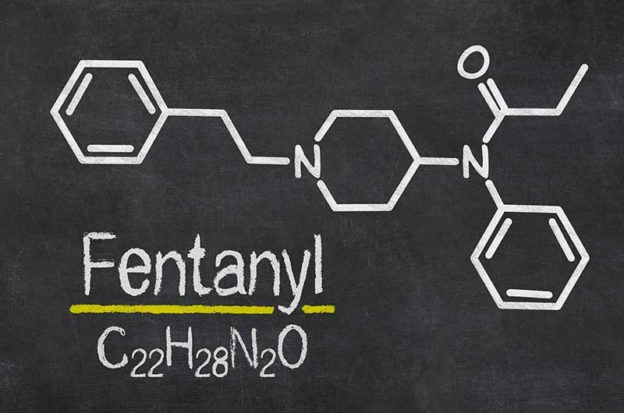There’s a new “heroin” on the streets, making this drug more lethal than ever. This is not any ordinary heroin, rather it’s the combination of heroin with fentanyl. Fentanyl is an opioid that has greater potency than heroin. This new combination causes serious problems with increasing overdose numbers, compared to heroin alone. The following provides some information about the dangers of fentanyl-laced heroin.
What Is Fentanyl Used For?
Scientists originally developed Fentanyl as another opioid painkiller. Its high potency makes it a prime painkiller in patients who show significant morphine tolerance. It was discovered in 1959. Since then, it has become a commonly-used synthetic opioid in medicine, due to its relative safety under controlled medical environments. It gained ground for use in palliative care in the mid-1990s because of the easy-to-administer patches, sprays, and similar formulations.
A Surge in Fentanyl-Laced Heroin
Fentanyl-laced heroin first came to the attention of the DEA following a sharp rise in overdose-related deaths a few years ago. Illegally, it was first produced, in its fentanyl acetate form in the 1980s under the street name China White. However, its strong potency makes this new additive very dangerous. Fentanyl itself can cause similar side effects at lower doses, as commonly associated with heroin, including respiratory distress or arrest, or even death.
DEA reports show that drugs containing fentanyl have tripled between 2013 and 2014, with the trend continuing to grow, mostly from drugs coming up out of Mexico. In November 2016, the DEA declared prescription drugs, heroin, and fentanyl as the worst drug-related threats in the U.S.
For over 25 years, people from all over the world have chosen Waismann Method as their opioid detox provider.
We know the challenges you face and the importance of creating a unique and personal experience for you right from the start.Call for Detox Options 1-800-423-2482
Strength of Fentanyl Compared to Heroin
Fentanyl is a synthetic compound, produced in pharmaceutical laboratories for morphine-tolerant patients for control of extreme pain. By comparison, heroin is derived from the poppy plant. Through a variety of heating and alkalizing processes, the original opiate substance from the plant is converted into morphine and then into the stronger heroin.
Fentanyl has a potency that makes it 100 times more powerful than morphine and 30-50 times more powerful than heroin, according to an alert issued by the DEA following a sharp increase in the number of heroin-related overdoses. Sources at DrugAbuse.com state that the potency is closer to 80-500 times more powerful than morphine.
Drug manufacturers combine this extremely strong pain medication with heroin to lower costs. However, the combined potency of these drugs creates deadly side effects and is very dangerous. The mixture accentuates the effects of both drugs, creating a stronger high and a much higher chance of overdose.
The Increased Risk of Overdose from Fentanyl-Laced Heroin
Because fentanyl is such a strong medication, it magnifies the usual effects of heroin, causing overdoses at much lower dosages. It acts like heroin, causing nausea, sleepiness, and confusion, leading in overdoses to loss of consciousness, respiratory depression, and respiratory arrest. Unfortunately, it’s tough, if not impossible, to distinguish fentanyl-laced heroin from heroin outside of a laboratory testing facility.
People have mentioned that it can lack the vinegar scent of heroin while others mention the possibility of bright white, brownish, or purplish color to the substance. However, other additives used to cut heroin cause those effects. Thus, making it very easy to overdose accidentally due to the much stronger effects of the combined substance believing that you have received regular heroin. Overall, 63.1% of all drug overdoses involve opioids, accounting for 33,091 deaths in 2015.
Awareness and Action
Fentanyl-laced heroin causes serious problems on the street and is almost impossible to avoid. The ongoing epidemic of opioid use and overdose in the U.S. requires immediate commitment, awareness, and action. Improving access to effective individualized drug treatment, mental health care, and nationwide educational programs will help develop a multifaceted, coordinated approach between the public and government officials. Understanding drug dependence and addiction instead of stigmatizing the victims may prove the more effective solution to the opioid epidemic.






